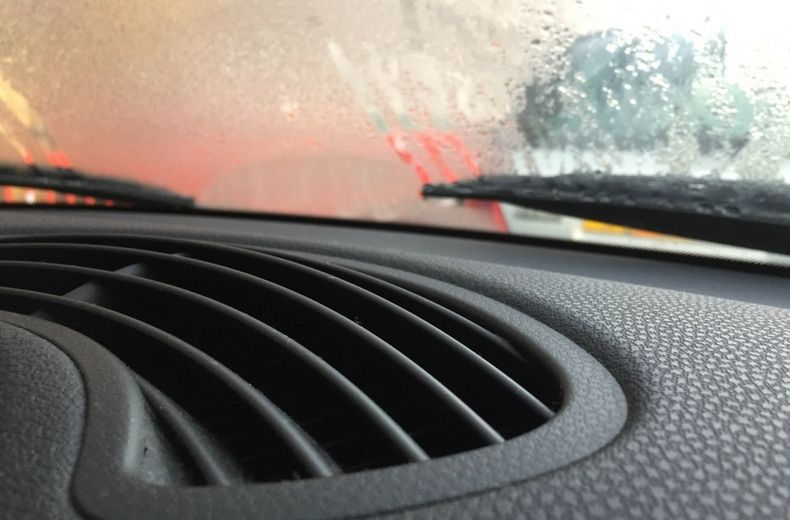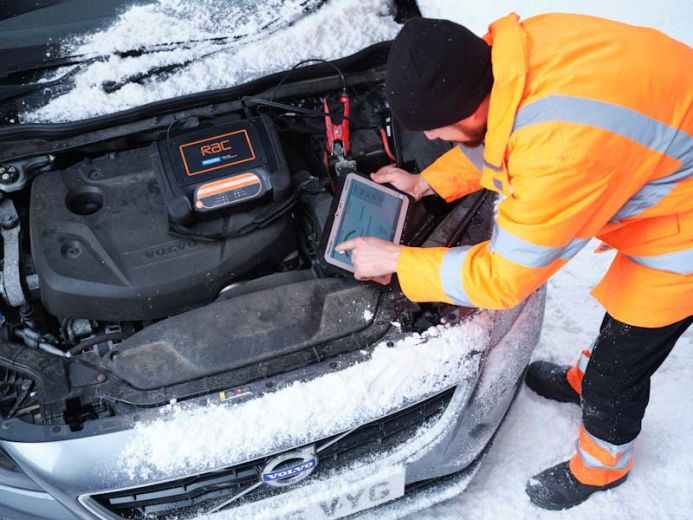We'd rather stop our members breaking down in the first place than have them suffer the inconvenience of being stuck at the side of the road, so we have devised a list of things to look out for to help prevent the more avoidable breakdowns.
Here are our top ten things to look out for, from things you may notice while you're driving to general checks to carry out before you set off.
Remember your 'FORCES'
Remember this acronym and you'll go a long way to ensuring your car is ready for any drive in wintry conditions:
F is for FUEL - Ensure you have enough fuel for your journey. Cars use more fuel in heavy traffic and start/stop conditions which can be regular occurrences, especially in wintry weather
O is for OIL - To avoid engine damage and a potential breakdown, remember to check your oil level and top up when necessary
R is for RUBBER - Your tyres can tell you a lot about how your car is performing. If they aren’t wearing evenly, then tyre pressures may be mismatched or there could be a fault with the steering.
Check that all four tyres have at least 3mm of tread and are inflated to the correct pressure - this is vital to maintaining good grip in wet and even icy conditions.
For everything you need to know about how to check your tyres you can read our how to check your tyres advice complete with short video.
Also take a look at your wiper blades to ensure they're clearing the screen effectively and that the rubber has not perished
C is for COOLANT - Make sure it's topped up to your vehicle manufacturer's recommended levels and it contains the right amount of anti-freeze
E is for ELECTRICS - Check all of your lights are working correctly including your indicators, brake lights and fog lights - and replace any faulty bulbs or blown fuses
S is for SCREENWASH - Top-up your windscreen washer fluid by using a good quality screenwash which is effective down to cold temperatures. Remember that colder conditions demand a more concentrated solution
Brakes feel different in winter
The brakes are the most important safety feature of any car, so it’s important to keep an eye on wear rates – especially when grip could be at its lowest in winter.
Unusual grumbling noises, a car pulling to one side or a ‘long’ spongy brake pedal could point towards a problem with the braking system; get things checked out by a RAC Mobile Mechanic if you’re not sure.
Flaring engine revs in the cold
Flaring engine revs under hard acceleration are the main indicator that your vehicle’s clutch is slipping.
If this is the case then unfortunately there’s no cheap fix – the clutch will have to be repaired or replaced.
Do not leave it as doing so may damage your flywheel and in turn, your engine - contact a reputable garage as quickly as possible.
Intermittent knocking sound
An intermittent knocking or droning sound – especially when going round corners – could indicate a worn wheel bearing or driveshaft coupling.
If left unchecked this could eventually cause expensive damage to the hub assembly and suspension and lead to a loss of drive.
You should have the vehicle checked at a quality garage to diagnose the problem.


Accumulating condensation on windows

Constant freezing, thawing and condensation can see water accumulate where rain doesn’t during the winter.
If your car’s seals are past their best and water gets into the electrics, it could manifest itself in a number of ways: engine misfires, faulty electric windows or dud door locks can all be signs of a leak.
You can try and track down the fault yourself, waterproofing the offending area, or alternatively take it to a garage.
Engine hesitation
Hesitation from the engine when asking for acceleration could be down to a problem with the fuel system – or, more simply, you are running low on fuel!
If you’ve let your car run very low on petrol or diesel, it could have disturbed some sediment in the tank and sucked it past the fuel filter causing a small blockage.

RAC sale – up to 33% off*
• Roadside cover from £5.29 a month†
• We get to most breakdowns in 60 mins or less
• Our patrols fix 4/5 breakdowns on the spot

Engine stutter
Or the stuttering could be that your spark plugs or spark plug leads have deteriorated to the point that they aren’t working properly.
Either way, both these points can cause damage to the engine, so it’s worth getting them checked by a qualified technician as soon as possible.
Car door frozen

We take getting into our car for granted, but if your vehicle won’t open using the remote central locking fob in winter, try a spare fob if you have one.
Make sure you replace the car battery regularly, especially if you start noticing the fob working intermittently.
If that still doesn’t get you inside, use the emergency key - it's usually inside the remote fob.
A loud knock
Loud knocking noises from deep within the bowels of an engine are never good news. If your car develops a strong rattle, stop the engine immediately and first check the oil level on flat ground.
If it’s below the minimum on the dipstick – or not even registering on the dipstick at all – top it up with a suitable grade of engine oil.
You may have averted crisis if it goes away, if not, you could be looking at a very expensive repair or replacement expensive at Christmas time.
Engine won't turn over in the cold
Freezing temperatures can take their toll on mechanicals and electronics.
If your vehicle’s engine won’t turn over, you could have a flat battery or a stuck starter motor.
While this isn't so much a preventative measure it will at least give you a clear indication of what the potential fault is so you can assess what to do next.
Look to charge your car battery or receive a jump-start from a healthy car.
If it happens again, your battery could be reaching the end of its life or it's possible your alternator might not be charging the battery properly, too.
If your battery does need replacing, the RAC Battery Fitting Service is the answer. Visit our car battery section to find out which battery you need or call us on 0800 096 2968. We can deliver and fit these for you – and fitting is free for members.
Get 30 driving tips that will save you money
Running a car isn’t cheap, but there are some easy things you can do to keep your costs down. Get these tips and more useful driving articles sent straight to your inbox now.












